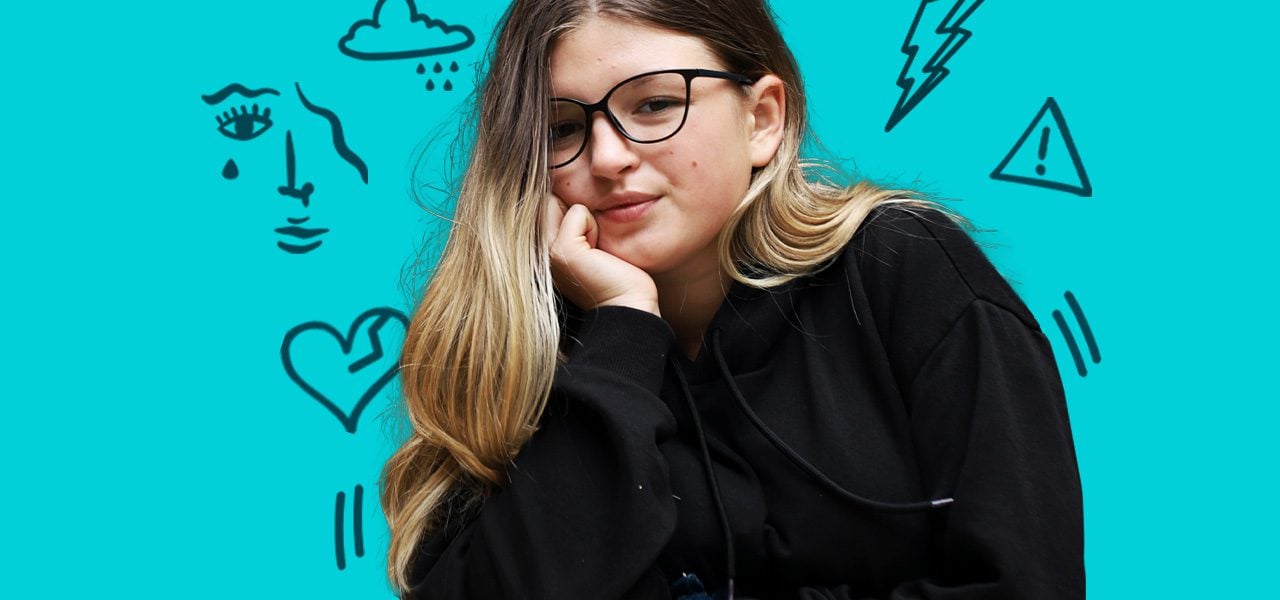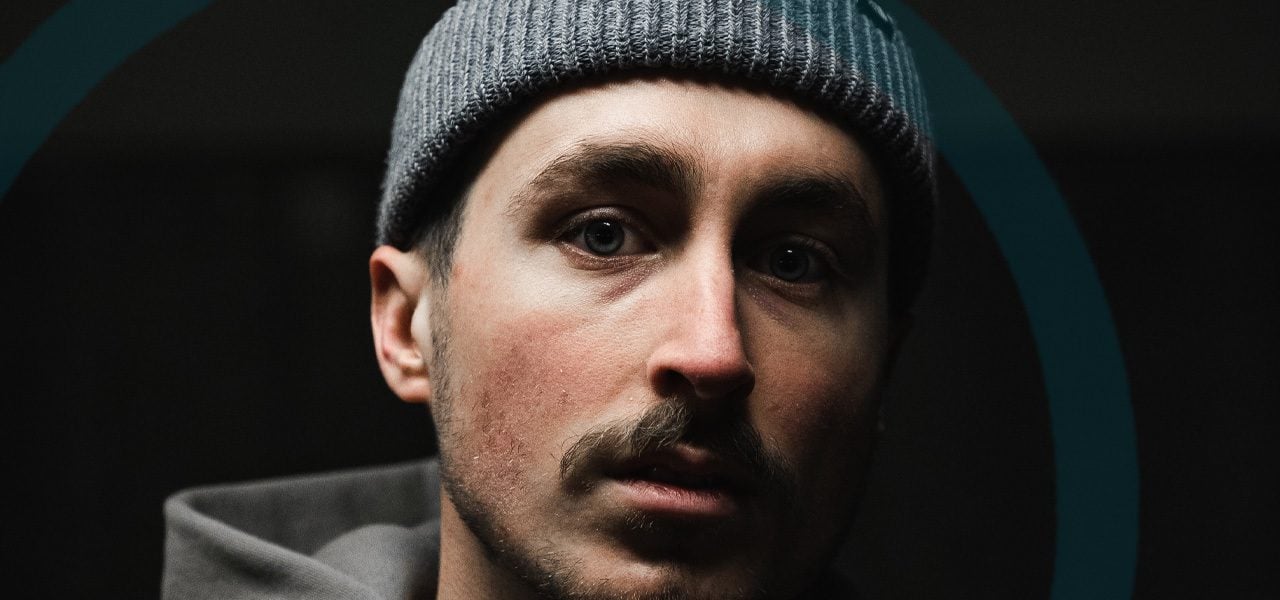Teresa Bansen, Director, Quality and Patient Experience sheds some light on what’s troubling young people – and where they can find help.
Recent findings by the Mental Health Commission of Canada found that 1.2 million children in Canada are experiencing mental health issues. And less than 20% get the care they need.
A perfect storm of conditions is putting today’s youth at greater risk for addiction and mental health disorders. Social media, video games, peer pressure, and an intense political climate are all playing a part.
EHN Canada offers a virtual Healthy Minds Teen Comprehensive Program available to youth across the country. Teresa talked to us about what’s on young people’s minds and what makes our program uniquely positioned to help.
WHAT YOUNG PEOPLE ARE STRUGGLING WITH TODAY?
Teresa: While substance use and mental health concerns have been impacting youth for ages, there are some relatively newer concerns that young people are facing.
One concern, unsurprisingly, is the impact of the pandemic on children and youth. I don’t know that we fully understand or can anticipate how COVID has impacted youth. To speak to what I’ve seen with youth I’ve worked with, along with what other professionals in the field have noted, is that we’re seeing an increased tendency to isolate and that youths’ social batteries are running out more quickly.
We know that because of the pandemic’s closures and lockdowns, many children and adolescents missed out on very important socialization and developmental milestones. In some ways, children and youth are presenting a bit younger developmentally because they haven’t had as many opportunities to gain experiences with their peers, interests, and academics in the way that the generations before them have.
Other concerns many young people are struggling with are technology and social media, which has likely been reinforced and worsened by the pandemic and lockdowns. There’s also typically a pretty large discrepancy between the capacity and understanding adults have of social media and technology when compared to the knowledge of young people. Gaming has also been identified as a growing concern brought forward by parents and caregivers. Many parents I’ve worked with are expressing concern about their children and teens spending excessive amounts of time playing video games, as well as time on their screens.
YOUNG PEOPLE ARE VERY TECH-SAVVY, YET THEY’RE STILL VULNERABLE TO SOCIAL MEDIA DANGERS. WHY IS THAT?
Teresa: Youth tend to be very tech-savvy and can typically find their way through a variety of applications, even providing support and help to their parents or siblings. However, the brain does not stop developing until at least the age of 25, which puts youth in a particularly vulnerable position when consuming media and technology.
We also know that when parents are armed with knowledge and information about risks associated with behaviours or common vulnerabilities for youth, they can facilitate helpful discussions surrounding concerns. However, with social media and access to technology, there is a gap in knowledge and therefore parents are less likely to be able to facilitate meaningful conversations about risk and safety.
THERE MUST ALSO BE ELEMENTS OF SOCIAL MEDIA THAT TEENS DON’T TELL THEIR PARENTS ABOUT?
Teresa: Yes, absolutely. I am glad you raised this point. I think a large majority of teens have experienced or contributed to various levels of cyberbullying, or perhaps have felt out of control or troubled regarding situations or relationships online. For example, a peer has access to a photo or information that they sent, which then gets shared with others without their consent.
Another potential area for concern is that many adolescents are meeting friends online – friends that they may not ever meet in person. These could be mutual friends they’ve added through a platform such as Snapchat, or it could be people who live on a different continent altogether. And unfortunately, a lot of parents just aren’t aware of the number and nature of relationships their teenagers are making online.
While many parents do a good job of educating their teenagers on the basics about certain risks of the internet, there are still tremendous gaps and blind spots that parents aren’t even aware of.
SOCIAL MEDIA HAS HELPED CONNECT YOUNG PEOPLE WHO FEEL ALONE. AND IT HAS HELPED REFLECT DIFFERENT BODY TYPES, ETHNICITIES, AND GENDER EXPRESSIONS. HOW DO TEENS BALANCE THE GOOD AND BAD?
Teresa: I do believe that social media can have a really positive impact on people’s lives, as well as help to raise understanding and increase access to information and education on important topics. For example, social media can be a great vehicle for increasing representation of certain folx within the media, or for advocacy surrounding equity deserving groups like BIPOC or 2SLGBTQQIA+ communities. Having said that, it’s hard to know how much of this positive content is being consumed by adolescence.

It can be helpful for trusted adults to work with young people to avoid certain topics that might be triggering or unhelpful for them. For example, if a teen is in recovery from an eating disorder or has mental health concerns, it is worth having open, non-judgemental conversations about which pages or accounts they should consider removing from their social media feeds.
Approaching these conversations with curiosity and working with the youth to come up with their own solutions can also be helpful. This could also look like actively searching out and interacting with those more positive accounts and content. Unfortunately, there’s still a lot of really negative content out there that’s misrepresentative of many things, with a large portion of it pertaining to mental health concerns.
Additionally, it is especially hard for adolescents to discern what advice and content is healthy and legitimate versus what isn’t.
HOW MUCH IS A TENSE GLOBAL POLITICAL CLIMATE IMPACTING YOUTH MENTAL HEALTH RIGHT NOW?
Teresa: I’ve seen some examples where I have really admired and been impressed by the level of insight, nuance, and advocacy young people bring to important social justice movements. I personally have had moments where I feel very encouraged and hopeful due to younger generations being so vocal and well-informed on important topics.
However, as you can imagine, the flip side of having so much access to global information can feel very overwhelming and can absolutely have a negative impact on mental health. For example, for an adolescent exploring their own gender identity who isn’t sure how to work through this self-discovery, access to tense political climates regarding gender and sexuality has the potential to significantly impact their mental health. Similarly, it is important to recognize the impact of witnessing collective trauma, which can be quite detrimental for youth given their stage of development.
PEER PRESSURE HAS BEEN DISCUSSED AS A CAUSE OF TEEN MENTAL HEALTH ISSUES FOR DECADES. WE SEEM TO HAVE MADE LITTLE HEADWAY IN SOLVING THAT ISSUE.
Teresa: Oh, gosh, and there really isn’t a simple solution to peer pressure because relationships and connection are at the core of our being. Humans are social creatures who have a survival instinct and drive to feel included, valued, loved, connected, and as if we belong.

For many youths, staying connected to peers and being accepted can often override any hesitancy they may feel about engaging in certain behaviours, such as drug use. If being with friends is the only place a teen feels that they really belong, or have a chance of eventually belonging, it makes sense that the adolescent (or anyone, for that matter) may succumb to peer pressure. It’s hard-wired into us.
DO YOU THINK THAT WITHIN 2SLGBTQQIA+ TEENS, THERE ARE EVEN MORE WHO ARE LOOKING FOR COMMUNITY AND FINDING IT IN THE CLUB SCENE?
Teresa: This is a great question. While I can’t say yes or no definitively, I would have to imagine that that is what’s happening to many young people. Because as we talked about, if you’re already in a marginalized position and “othered” within the larger society, it’s hard to find your place of fitting in and connection.
CAN YOU TELL US ABOUT EHN ONLINE’S HEALTHY MINDS TEEN PROGRAM AND HOW IT CAN HELP?
Teresa: In light of everything we’ve just been chatting about, there is a great need for youth and for families to navigate what’s happening for them. Specifically, the Healthy Minds Comprehensive Teen Program provides youth with the counselling, education, and support they need to thrive. It is a 6-month program that also includes educational and supportive sessions for caregivers to help foster a healthy and open environment for their teens – all virtually.
WHY IS TREATING CONCURRENT DISORDERS SO IMPORTANT?
Teresa: It’s been my experience working in the field of mental health that teens with concurrent disorders tend to fall through the cracks. For example, if a teen has both substance use and an eating disorder, they may get a referral to an eating disorder program. However, once they complete the assessment and it’s identified that they also use substances, substance use is a common exclusion criterion, which will likely lead to the assessment team asking the teen to work on their substance use first to access services. Often, a similar situation arises if the same youth attempts to get help for their substance use first.
When we look at human behaviour, what it boils down to is just different symptoms for similar pain and struggles that human beings experience. I think it is important that we offer this treatment so fewer teens will fall through the cracks.
YOU MENTIONED SUPPORT FOR BOTH TEENS AND THEIR FAMILIES?
Teresa: Yes, we really encourage parents and caregivers to attend the family support components of our program. Many parents don’t know what to do or how to support their teen, but there’s a clear desire from families to learn.
Specifically, the Healthy Minds Teen Program offers orientation and exit sessions, as well as 12 hours of Emotion-Focused Family Therapy for caregivers. The hope is to build some community and connection not just for the teens, but for parents and caregivers as well. I’ve heard from so many parents that having a child that is struggling can be an incredibly isolating experience, leaving caregivers feeling lost and helpless. And the research shows us that when family is involved, there are much better outcomes for treatment.
SHOULD TEENS IN THE PROGRAM WORRY THAT EVERYTHING THEY SAY IN TREATMENT WILL BE SHARED WITH THEIR PARENTS?
Teresa: No, definitely not. As licensed mental health professionals, we have to adhere to personal health privacy laws, which means that what youth share with us must remain confidential. There are always exceptions or limits to confidentiality with regard to imminent harm or safety, but our clinicians do a great job clarifying any questions youth may have.
SO, TEENS WITH VARIOUS STRUGGLES – EATING DISORDERS, TRAUMA, OCD, ADDICTION, DEPRESSION – WILL ALL EXPERIENCE GROUP THERAPY TOGETHER?
Teresa: Yes. There are a few different reasons and ideas behind that. These teens are struggling and are in pain. They need support. The behaviours they have are just the surface level symptoms. Having teens together with various struggles can be really helpful for them to not feel like they’re alone or that they’re weird or different.
HOW CAN PARENTS, TEACHERS, AND HEALTHCARE PROVIDERS KNOW WHEN A TEEN IS REALLY STRUGGLING?
Teresa: That’s a great question. There is a large range of indicators that parents, teachers or healthcare providers can notice or pick up on when a teen is struggling. Generally speaking, warning signs may include noticing fairly significant shifts in the youth’s mood, whether the teen is a lot more excitable than usual, or perhaps noticing the teen is feeling sad, disengaged, or is self-isolating. If grades start to drop in school, that’s typically an indication that they’re struggling in some way.
You may notice a young person commenting more on their body or on their appearance, which might include really degrading comments toward themselves. It may be helpful to watch out for significant weight loss or weight gain within a short amount of time, as well as changes to how much and what types of foods they’re eating.
We are also starting to see more parents pre-emptively connect teens with a therapist or support program. The teen may not be expressing significant distress, but it can still be very helpful to make that connection with a trusted person or therapist before things get really bad. Having an existing connection and learning skills in advance can help with preventative work.
FIND OUT MORE ABOUT BELLWOOD’S OUTPATIENT YOUTH PROGRAM.
Our Healthy Minds Comprehensive Teen Program is designed for teens aged 14-17 experiencing mild to moderate symptoms of anxiety and depression. The Healthy Minds Comprehensive Teen Program is an online program that provides youth with the counselling, education, and support they need to thrive. This 6-month program also includes educational and supportive sessions for caregivers to help foster a healthy and open environment for teens to grow.
Facilitated by a master’s level therapist, the program includes:
• Family Orientation and exit sessions
• 1 DBT/CBT skill-building group and 1 individual therapy session for youth for 8 weeks
• 12 hours of emotion-focused family therapy for caregivers
• Regular outcome measurement
• Virtual medical care with a nurse practitioner for pharmacological support
• 4 months of weekly aftercare groups to reinforce skills and provide peer support
• Access to iCBT app for skills practice for the duration of the program
IF YOU, A LOVED ONE, OR A PATIENT ARE STRUGGLING WITH ADDICTION OR A MENTAL HEALTH DISORDER
Contact us to learn more about treatment programs that can help at 1-866-963-6343.
Teresa Bansen, MSW, RSW, is Director of Quality and Patient Experience at EHN Canada’s Bellwood facility in Toronto, Ontario.



